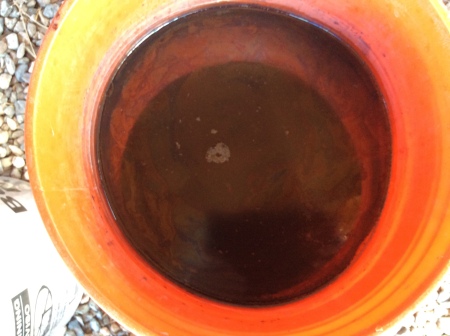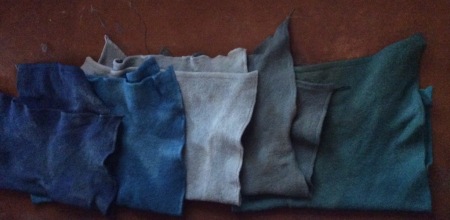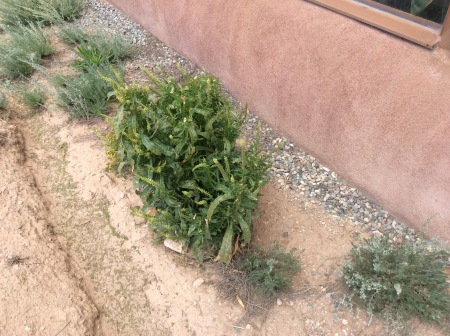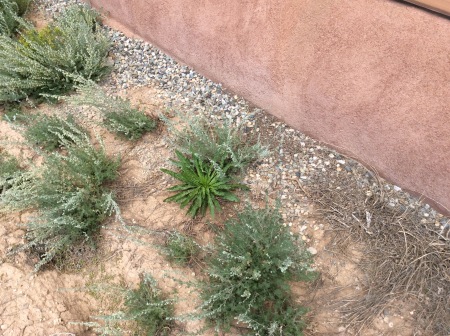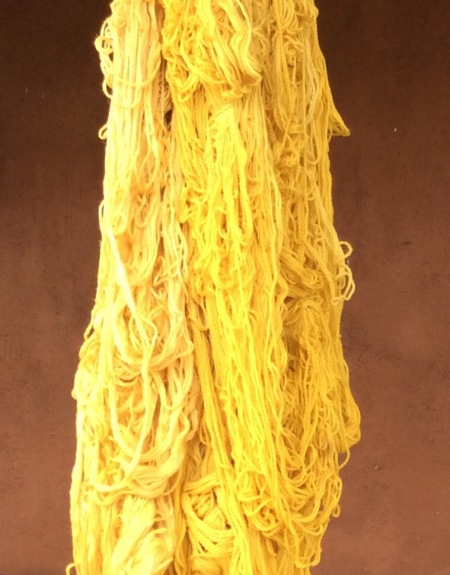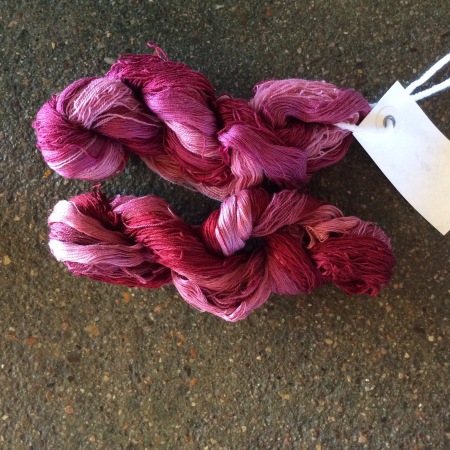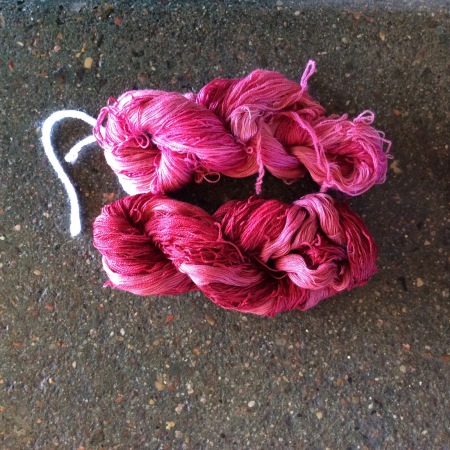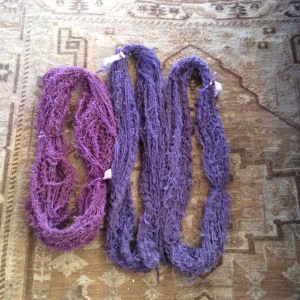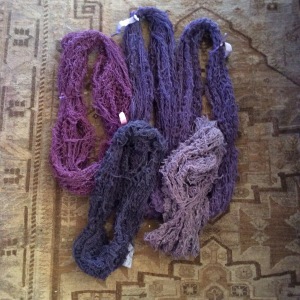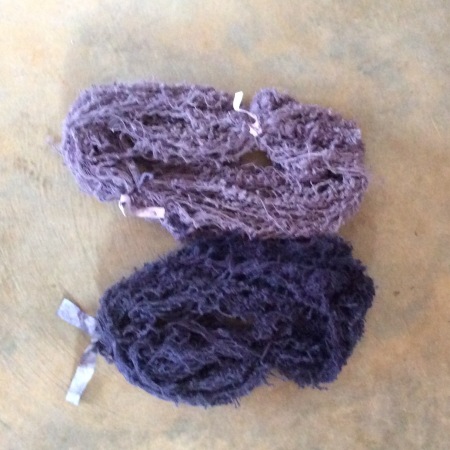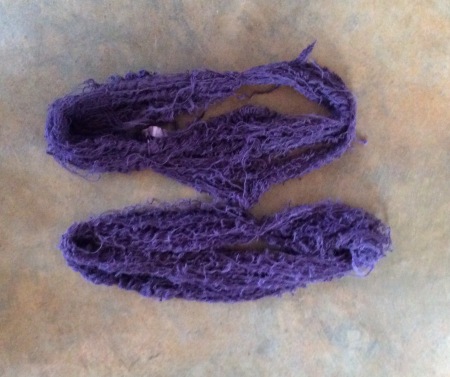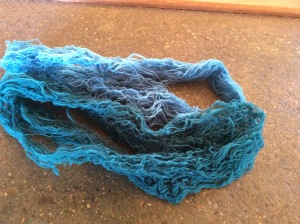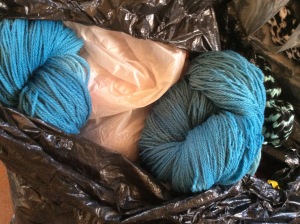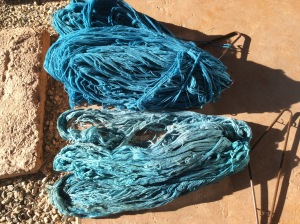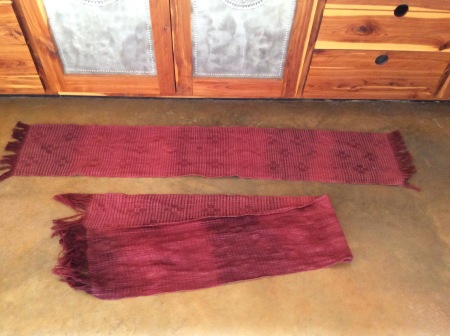It started with a client that wanted pale blue. The fiber was wool; specifically cormo sheep wool. We had many discussions where I tried to explain the pale blue and indigo in production quantities would be difficult. Why? You need to mostly exhaust the thio vat and dye with what is left to get a pale blue. You could try to mix different concentrations of indigo but again, it is really hard to judge. I could get one or two skeins of the right color but not 5-10 lbs. I tried woad which is the right color but is is hard to come by and expensive. Fast forward a couple of years. Fellow natural dyers Donna Brown and Catharine Ellis did some experiments with thio versus the 1, 2, 3 vat and discovered that thio accelerated the time it took to get indigo into solution. It was suggested that I try a 1, 2, 3 vat with minimal amounts of indigo. Donna and I did an experiment with 10 grams of indigo with the corresponding amounts of fructose and lime. We got, you guessed it, light blue. Now to try it with bigger quantities. I set up buckets, mixed a 1, 2, 3 solution with hot water, added warm water to the bucket, added the solution, mixed it all up and waited 8 to 24 hours depending on how impatient I was. I used a bucket with holes in it inside the indigo bucket to keep the yarn off the bottom and left the throughly wetted out yarn in for an hour. I could dye 1 – 1.5 lbs per bucket and then had to remix. Most of the yarn was dyed at least twice. The thicker yarns were much more uneven and had to be dyed 3-4 times. There was no problem with the wool and the high ph. I believe that it is the high ph, heat, and thio which causes the wool to become harsh and dissolve. Further experiments relative to that issue are needed (heat the 1, 2, 3 vat and see if you have the same problem). There was also no problem dyeing the wool without heating the 1, 2, 3 vat. It was at room temperature. It was difficult to dye the skeins evenly, especially the heavier ones. They may benefit from constant movement as you would for a silk or cotton skein but I was hesitant to try that method as handling wool a lot does not usually work well. I tried using the water from an exhausted vat and refreshing the indigo. I got a lot of foam on the top, probably from too much lime. So refreshing the pot also needs some experiments. It may work to half the amount of indigo and use a thio vat but this is simple enough that it is worth adding to the tool kit. Catharine Ellis has a lot of useful information on her blog about the 1, 2, 3 vat.
Bucket with indigo, lime and fructose, first picture
Bucket with too much lime, dyed ok but didn’t like foam, second picture
Heavier skeins were dyed multiple times to get even. Light skein was dyed twice, third picture.